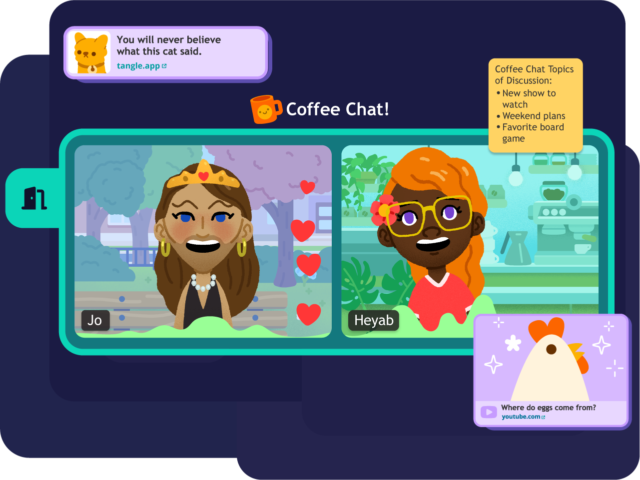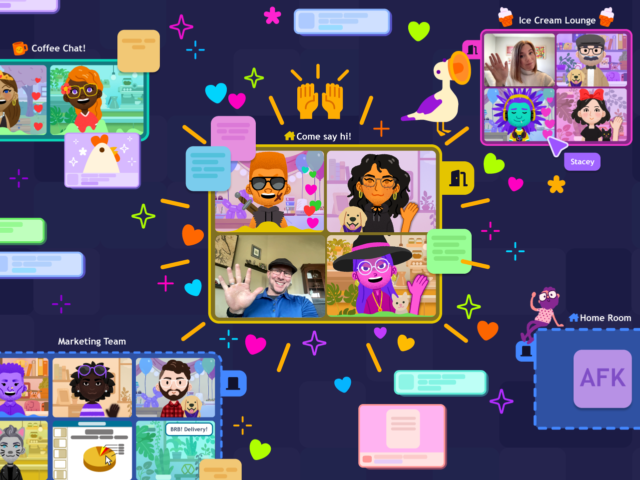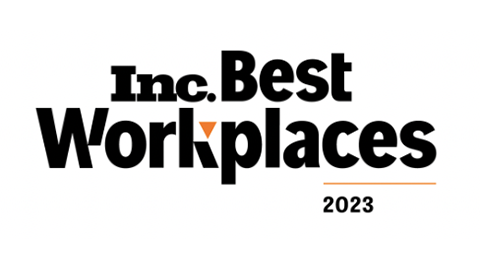I finally peeked out of my pandemic cave to go to a conference. I don’t think I could have been convinced out by anything less enticing than DICE it’s one of my favorite conferences. With strong emphasis placed on roundtable discussions, and connecting deeply with your fellow industry heads and studio leaders, it’s definitely one I missed attending the past few years. I’ll even forgive its unfortunate Vegas location it’s not my cup of tea, but I’ll go anywhere for the incredible programming and meaningful conversation.
And this year’s programming definitely had me in mind. With Roundtable discussion topics such as Successful DE&I and Anti-Racist Leadership Strategies (Guided by Arne Meyer of Naughty Dog), Exploring Shared Identity and Purpose in Studios (Led by Malia Atta from Insomniac Games), and Are Your Diversity, Equity, and Inclusion (DEI) Initiatives Helping or Hurting? (Facilitated by Anita Sarkeesian of Feminist Frequency, an absolute legend and a personal influence of mine ever since I was a smol entering this industry), I ran with my notebook to every one, looking to share and listen to lessons learned and next steps.
So DEI is top of mind and starting to be a more frequent conversation. Finally. Thank god.
However, it’s important to understand that DEI can’t just be a conference roundtable, a shared YouTube video, or a once-a-year workshop. With all studios, but remote companies ESPECIALLY, DEI needs to be built into the very bones of your company. Remote work, by its nature, has the potential to be more diverse, opening up the possibility of hiring from different locations, different countries, different cultures, not just sunny southern California. So it’s even more important to craft a culture that understands racial, ethnic, religious, sexual, gender, economic, and location diversity.
This means that, ideally, studios are doing this work right alongside figuring out if they’re going to incorporate as a Delaware C-Corp or an LLC, seeing if their company name is available as a .com, and making their first hires.
But weaving DEI into the fabric of your company foundation is more newly popular, and there aren’t many examples of studios doing this, few tried-and-true best practices, or public retros on what did and didn’t work. And I’m not going to give you those either. I’m not even close to a subject matter expert on this topic. But I am a founder, a studio head, and I am hoping to try something different in my own corporation, to help make safe the myriad of hearts and identities that have come to work with me. This article, itself, is part of me holding myself accountable to our values, trying to advocate for a more considered, aware, industry. And sharing our lessons and attempts so that we can have open dialogue about what works and and shared discussions on how we can do better.
So here are the actual tangibles we do at Tangle:
Company Formation
Do NOT do a single day of business without considering DEI. The day Alex and I brought on our first hire, was the day we wrote our company Code of Conduct. If you aren’t sure how to write one, there are several you can source from online. Read through it and do as many edits and modifications as you need to be reflective of your company and your culture. Codes of Conducts are not legal documents, so you can add whatever you feel is necessary to foster a safe and inclusive work environment.

I tend to write these not as proscriptive lists of behavior for people who are looking to violate these rules, but as definitions to give folks a clear understanding of what the expectations are at our company. Remember that the people who will go back and review your Code of Conduct are folks who have been harmed or feel uncomfortable, and are reading your document to see if the thing someone did or said to them was allowed or not. So write your Codes of Conduct not for you but for them.
So write your Codes of Conduct not for you but for them.
Company Growth
Find and work with a DEI expert or group as soon as possible. Like I said, I’m not an expert on DEI and it’s highly likely, neither are you. Trying to hodge-podge and best-guess some policies and culture practices when you don’t know what you’re about in this space can lead to unknowing harm and psychic damage to your team. So you’ll want someone who is more experienced and knowledgeable about this area. When you start growing, it often happens faster than you think so it helps to get ahead of it. I started looking for DEI help when we were around 9 employees, but found our consultant, the amazing Dr. Kiera Penpeci, Principal Consultant at Primed OD, when we were at 14 folks.
Look for someone who will be interested in getting elbows-deep in the work and give them the authority to make big suggestions and changes. The right group or person will help you review your policies, processes, and handbook, and set up a long-term plan and ongoing plan for DEI. They can help you research and suggest benefits that help promote a more equitable work experience. They can help you identify your DEI goals and formulate accountability systems to help you keep to them. And yes, workshops too.
Dr. Penpeci started our engagement by doing a studio-wide survey, including small group interviews, to get an idea of the experience of working at our company. They analyzed and coded the responses, and used this information to help inform areas of growth where we could improve, and set up a plan with us on setting goals and accomplishing them. Dr. Penpeci was then invited to present this same information to the entire company. Being transparent with your DEI goals, initiatives, and timelines, is another way to hold yourself accountable to your team, as well as getting them involved in the process.
Which is another huge part of DEI. You need to make sure DEI isn’t something that is just presented to, or handed down to your employees, but that they are also included as a part of it. That they are onboarded on to the process, and take personal responsibility and ownership for it as well.
Which is another huge part of DEI. You need to make sure DEI isn’t something that is just presented to, or handed down to your employees, but that they are also included as a part of it. That they are onboarded on to the process, and take personal responsibility and ownership for it as well.
Our second exercise with Dr. Penpeci was crafting our company values. After we worked together to come up with some direction for what was important to our company, we scheduled a studio-wide day-long workshop to talk in depth about our values. During the workshop we did group exercises on coming up with specific examples on how these values affect our work, our team, our culture, and our products.

Company Maintenance
DEI doesn’t stop! It’s an ongoing process! Even after your handbook is written, your policies and benefits documented, your values are codified, you still have to keep an eye on it. Just like your company culture, financials, and roadmap, DEI has to be diligently tended to.
DEI doesn’t stop! It’s an ongoing process!
Here are some things to keep in mind even after you’ve done the big DEI push.
- Keep making more plans on how you can improve. Foster a culture where your team feels safe bringing up things for leadership to think on and address. Establish a long-term plan with your DEI team and share it with the whole company.
- Identify someone on your leadership team to champion DEI. If it doesn’t come from the top, it won’t get prioritized. You need someone who has the authority to fight for DEI at every level.
- Make a budget for DEI every quarter, and put it in your budget. Share it with your stakeholders and investors. Get buy in at every level, and hold yourself accountable.
- Keep in mind that every new person who gets onboarded needs to be onboarded into this DEI-centric model at the onset. Work this into your onboarding objectives.
- Understand that DEI includes diversity of all kinds, ethnic, racial, religious, gender, sexuality, socioeconomic, education, communication, culture, physical health (both chronic and acute), mental health (also both chronic and acute), household and familial structure/changes, and more. So, keep a curious and open mind about DEI as you think about how it can affect your employees disproportionately.

Continued Learning
Most importantly, be aware of the unexamined, and of the changing, shifting landscape as more and more understanding of DEI in the workplace comes into focus. Be sure to check out some of the following resources to learn more and take steps in immersing DEI into your company’s DNA. Understand that DEI is not a goal in and of itself. Rather it is an ongoing practice.



